Prakaan arrives with intent. Thailand has long produced spirits, but the world has never been asked to take Thai whisky seriously.
Most drinkers outside the country know Mekhong, a spirit often grouped with whisky but much closer in composition to a rum or a blended cane-based drink flavoured with herbs and spices. It is a local favourite with its heritage and a story, but it couldn’t be conflated with Scotch or bourbon. Mekhong is its own, inherently Thai thing. It never set out to define Thai whisky. Prakaan does.
Prakaan (say it with conviction – Prah-karn) sets its stall out as the first premium single malt whisky to emerge from Thailand. It’s asking the world not so much to rethink what Thai whisky is. What it should taste like, how it should be made, and what its provenance looks like. But asking them to think for the first time about what all of that really means.
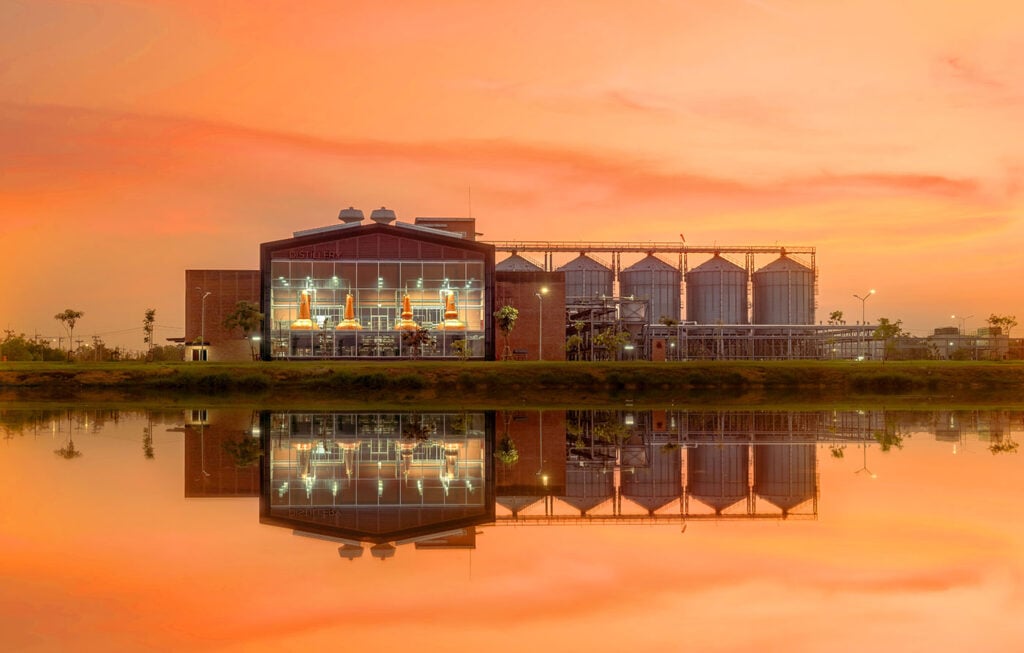
Welcome to Prakaan Distillery
Thailand’s first single malt whisky
Prakaan comes from ThaiBev, the country’s most influential distiller. You may be familiar with International Beverage, its international arm of drinks, which includes Inver House Distilleries and its five Scotch whisky distilleries: Balblair, Balmenach, Knockdhu (AnCnoc), Pulteney and Speyburn.
Just as Masataka Taketsuru travelled to Scotland to learn how to make whisky, in doing so laying the defining groundwork of Japanese whisky, Prakaan’s makers spent time at distilleries under the InBev umbrella, including Speyburn and Balblair. Not to imitate, but to understand how tradition might translate to a climate that behaves nothing like the Highlands.
The ambition behind the brand is clear. Instead of trading on novelty, its makers invested in technical depth. Copper pot stills were shipped in from Scotland. Fermentation, cuts, and cask management were built from a whisky mindset, not an adapted rum model. Prakaan isn’t trying to mimic Scotland. It is trying to do the job properly on its own turf.
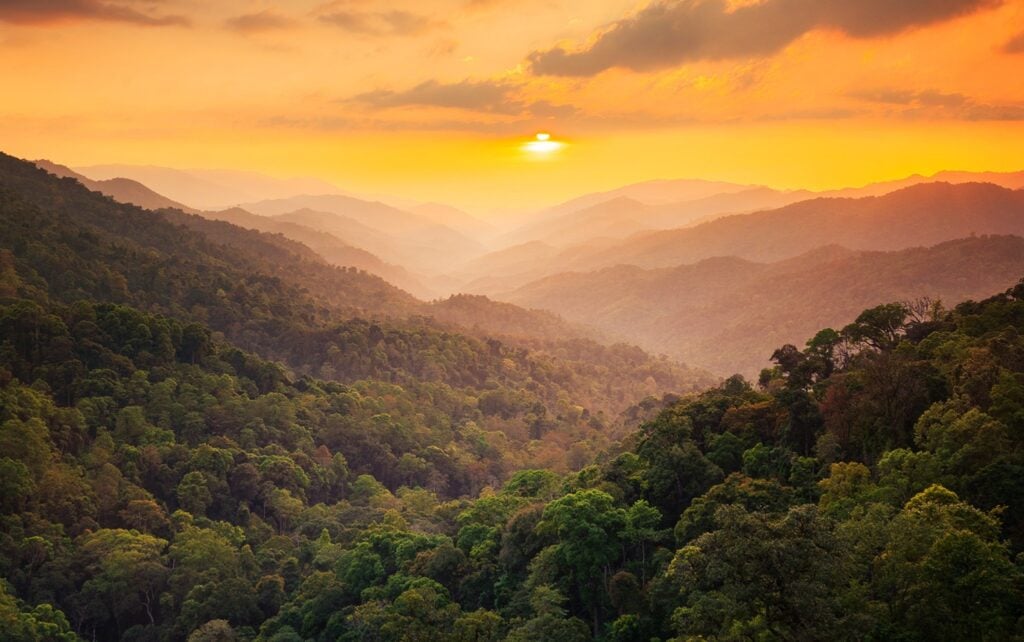
The Western Forest Complex, where Prakaan Whisky is made
Where Thailand’s landscape becomes flavour
The distillery sits in Kamphaeng Phet, part of the Western Forest Complex, a UNESCO-listed region of deep green jungle, mineral-rich springs, and air so thick with humidity that casks breathe faster than any traditional warehouse would tolerate.
Heat is both a gift and a hazard for warm-weather whisky makers. It can drive rapid development, but left unchecked, just as easily overwhelm the spirit. Prakaan’s answer is to mature casks underground, three to four metres beneath the surface. Soil acts as insulation here, where the temperature steadies and humidity settles. The angels still take their share, but not the whole feast.
The name Prakaan means “wall” or “fort,” a reference to the ancient stone defences that once protected the Kingdom of Siam and still stand in Kamphaeng Phet. It is a fitting metaphor. The whisky draws strength from its environment and respects the land that shapes it.
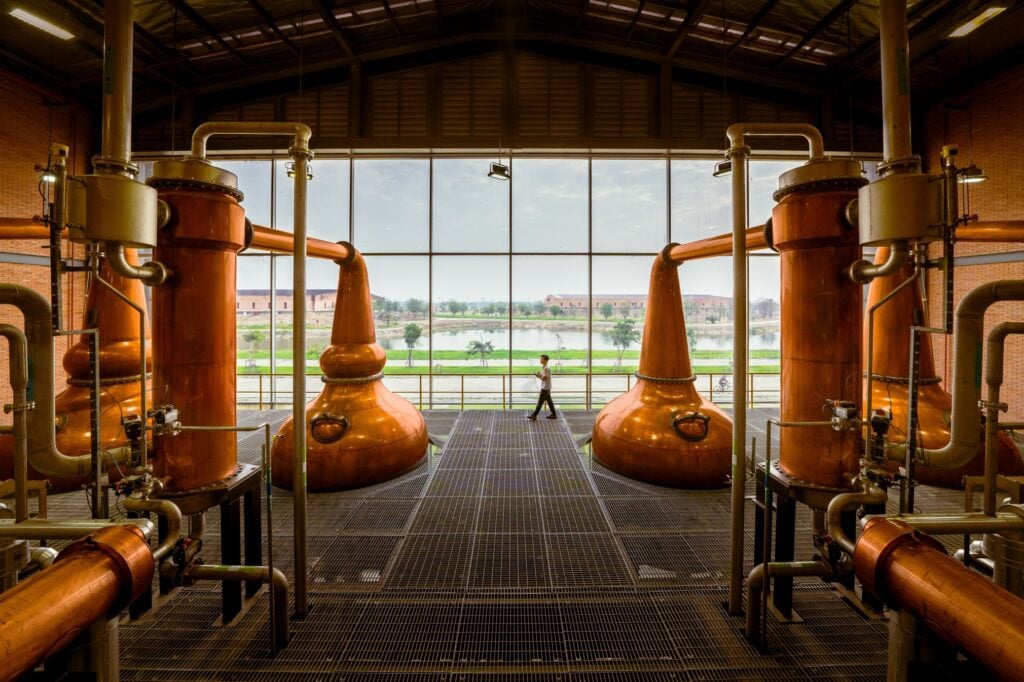
Prakaan is made on Scottish stills, but it’s very much a Thai whisky
A whisky shaped by its environment
Prakaan’s water comes from deep underground wells, between 200 and 400 metres, filtering through layers of mineral-rich rock before reaching the distillery. Fermentation takes place in stainless steel washbacks. Distillation is twice through copper pot stills. The new make spirit emerges with an arresting tropical aroma that persists even after years in oak. It is the fingerprint of the region and becomes the backbone of the final whisky.
The maturation warehouses hold 30,000-50,000 casks at a steady warmth. American bourbon and Spanish oak sherry casks are the primary barrels in service. In a climate that moves fast, bourbon casks are ideal to help anchor structure and sweetness. Sherry is more difficult to measure, but early signs show Prakaan’s whisky makers have steady hands.
Thailand does not have the peat resources to produce its own, and isn’t likely to in the future. The peated expression stands as the most divorced from its home, but it’s hard to resist the temptation of smoke, whisky’s maverick flavour. Pass it over and miss out. Prakaan uses barley malted with Highland peat. This brings the power without a maritime punch, allowing the fruit-driven house character to stay present.

Thailand has entered the world of whisky with Prakaan
A new chapter for whisky
International Beverage has taken Prakaan global, starting with Asia in 2024, Europe in 2025, and it will push it further. With brands like Old Pulteney, Hankey Bannister, Caorunn, and Cardrona in its portfolio, it knows this particular game intimately.
While Thailand is known for its beaches, cuisine and hospitality, Prakaan wants to establish a new identity. The Thai people appreciate craftsmanship and world-class whisky, too. The team at Prakaan tell me there’s “A 7% rise in demand for ‘New World Whiskies’ in recent years”. The standard for whisky across the world continues to improve, in line with an increased desire for new stories, new environments, new faces.
Thailand has a role to play here. But Prakaan refuses to be a token curiosity. It is serious in method, grounded in place, and confident enough to let its raw materials speak. The team behind it wants Prakaan in bars from Bangkok to Berlin. Its early awards, including a category win at the World Whiskies Awards for Select Cask, hint that whisky is already paying attention. If the next five years go to plan, Prakaan sees itself not as a novelty but as a standard bearer for Thai whisky and a significant voice in the broader new wave whisky movement.
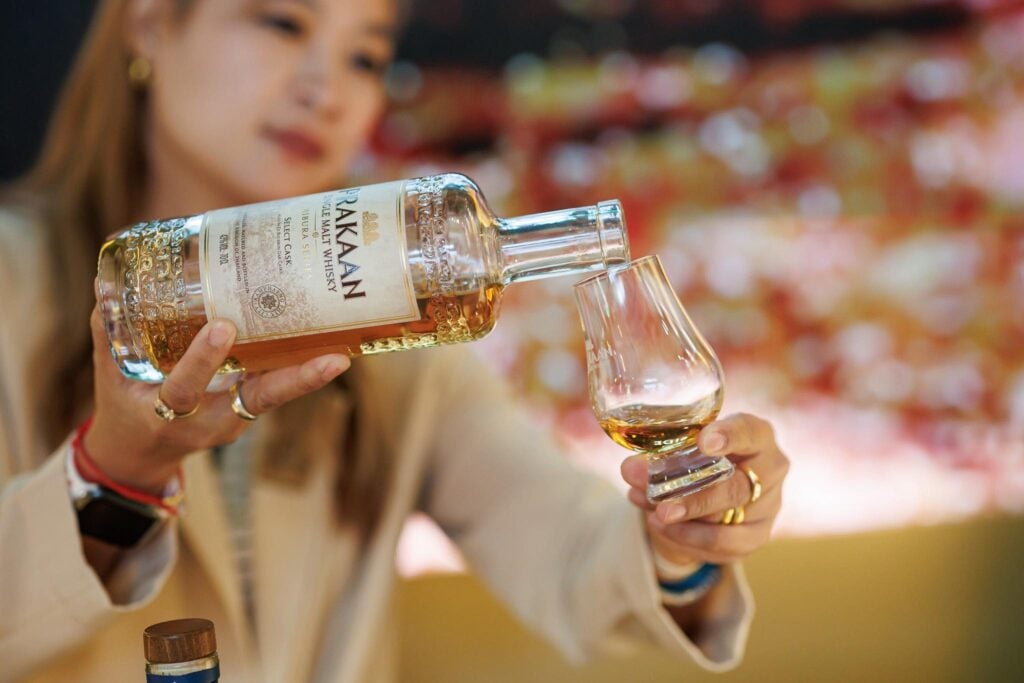
Meet Prakaan Whisky: Thailand’s First Single Malt
The Whiskies
Prakaan’s opening statement is the Tribura Series: Select Cask, Double Cask, and Peated Malt. It’s a proper core range, one that covers the basic flavour profiles and doesn’t trap itself with age statements. They’re easier in colder climates. In warm-weather whisky nations, a fixed age can become a steel trap, one that forces you to take a whisky beyond breaking point for the sake of the label.
The trio of whiskies are linked by a shared house style built on tropical fruit, spice, sweetness, and the warmth of underground maturation. Ask the team what Thai dish defines the spirit, and they point to Tom Yum Goong. Aromatic. Balanced. Distinct. Welcoming but unmistakably Thai. That comparison holds. Prakaan is bringing something new to the table.
Let’s meet the Prakaan whiskies. You can purchase these Thai single malt whiskies by clicking the link in the product names, which will bring you to the shop page.
Chon Gâew.
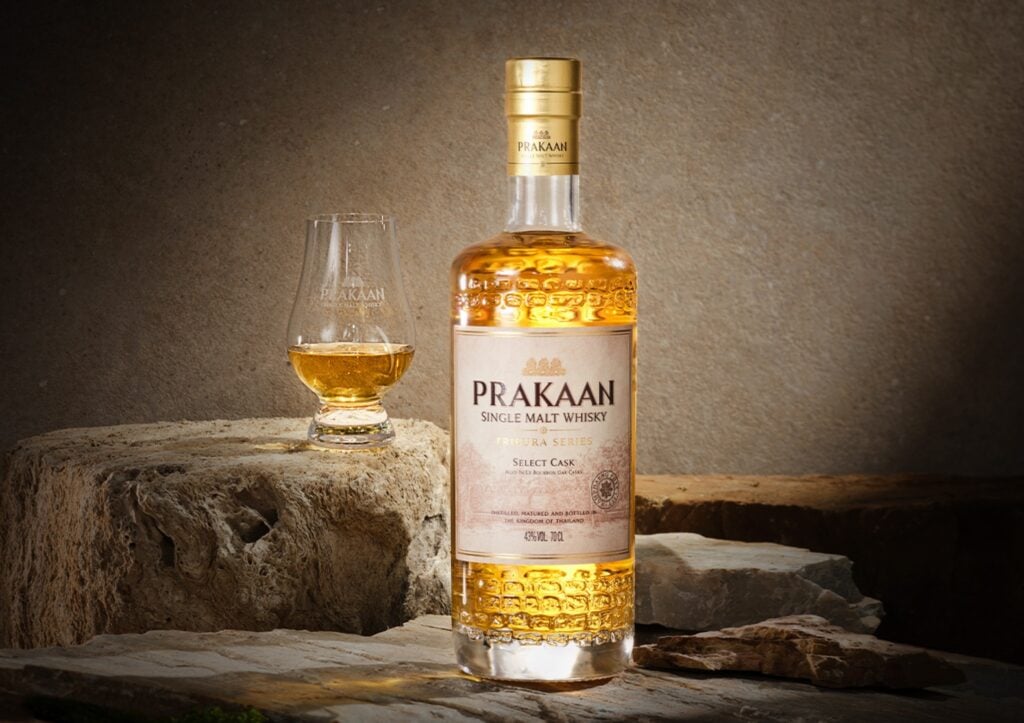
The award-winning Prakaan Select Cask
Prakaan Select Cask
Matured in bourbon casks and bottled at 43% ABV.
Price: £59.95*
Nose: Incredibly tropical and sweet, like tinned mango. There’s also gingerbread, crème brûlée, marmalade, red chilli earthiness, and marshmallow. It’s also quite perfumed and floral.
Palate: The palate has a lovely weight to it, going above 40% ABV to 43% was a deft touch. There’s a lot of very classic bourbon cask flavours here with vanilla sweetness, refreshing coconut, and a dusting of cinnamon. More yellow, red, and sweet fruit.
Finish: Scottish tablet, tropical juice, and oak spice linger.

The beautiful Prakaan Double Cask
Prakaan Double Cask
Matured in both bourbon and sherry casks and bottled at 43% ABV.
Price: £74.95*
Nose: There’s a nice blend of sherry and distillery character here. You see progression tasting directly from the bourbon cakes. Dried fruits meet the tropical among more gingerbread, Turkish Delight, honeycomb, and dark chocolate.
Palate: I keep tasting crème brûlée. I really have eaten too many of them this year. It’s in a tryst with Christmas cake. A bit of a sherried cliché, but it’s true here. Among more sticky dried fruit and aromatic spices are passion fruit and guava.
Finish: The bourbon cask character (American oak vanilla/toffee/coconut sweetness) takes over, with just a smattering of sherried spice at the end.
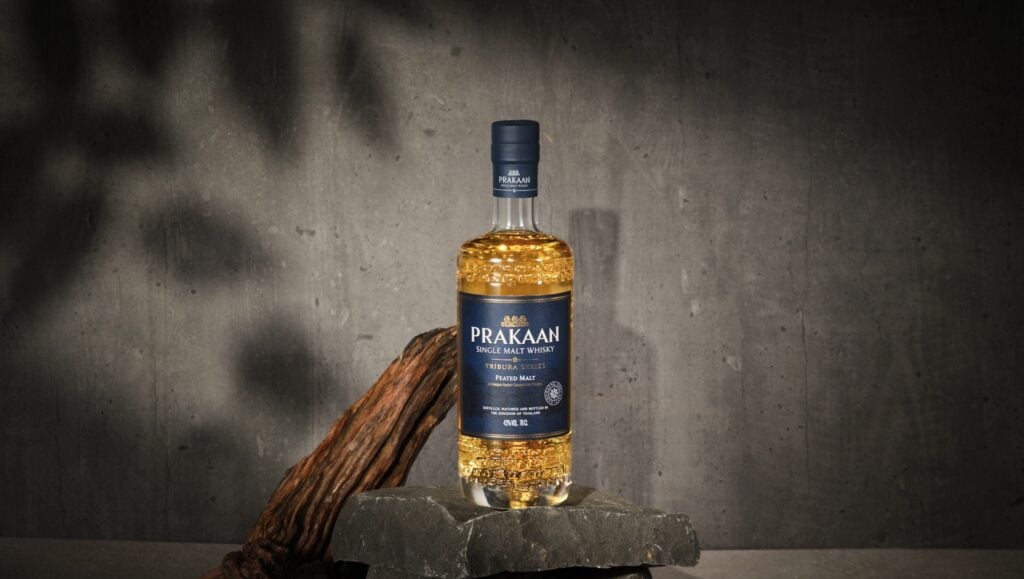
Thailand’s first peated single malt
Prakaan Peated Malt
Thailand’s first peated single malt, bottled at 43% ABV.
Price: £64.95*
Nose: It’s a BBQ of a nose, with hickory, the smoked wood, cured meat, caramelised pineapple, more caramel for good measure, and a little incense.
Palate: Sweet caramel and tinned pineapple have enough room to coat the tongue amongst the bonfire of smoke. The charred, the sweet, the meat flavours make a mark. But it’s not smoky in a way that’s overwhelming at all. Very intriguing and delicious. It reminds me of AnCnoc, which I suspect is not a coincidence.
Finish: Sweet and smoky.
*All prices correct at time of writing.
